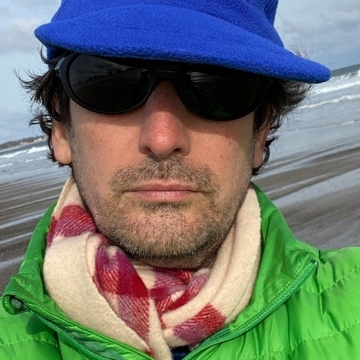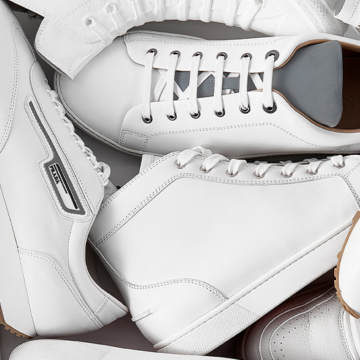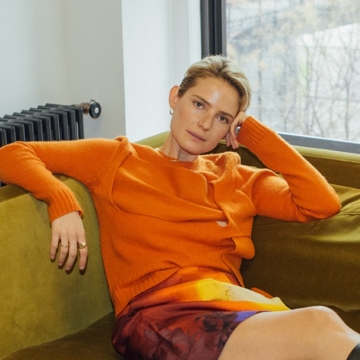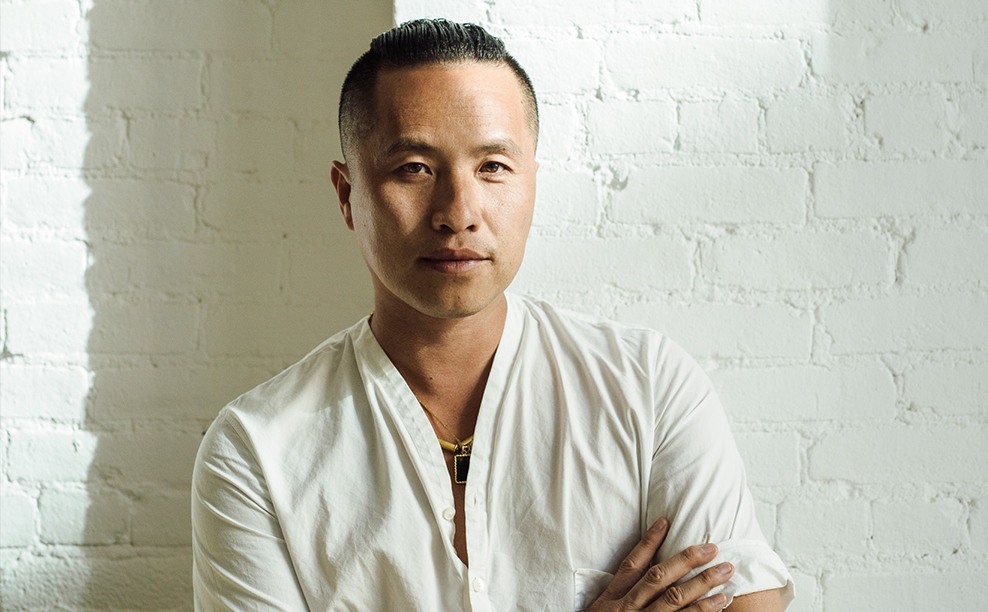
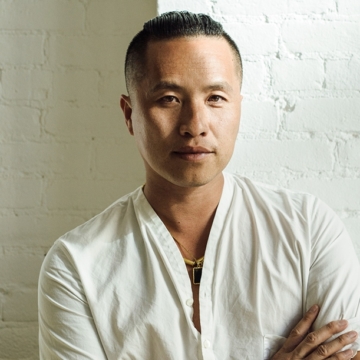
How Phillip Lim’s Full Circle Sale Is Another Move In His Sustainable Fashion Mission
“I hope we leave this momentous situation changed,” American fashion vet Phillip Lim tells me on the phone. “And there’s a part of me that really wants to believe that… but then there’s another side of me who’s the skeptic.” I called him to discuss his upcoming archive sale with The RealReal, but instead of just launching into business, the designer poetically waxed on the state of the world and insisted upon hearing about my emotional well-being. We’d never met before but It was a touching moment in a helter-skelter time.
Lim has been taking a thoughtful approach to fashion for a while now, though–starting with his own company. The designer, who enjoyed nearly instant, meteoric success after the launch of his label 15 years ago, has in recent years begun paring down his practice and leaning on more considered sustainable approaches to production, design, and output. It was a shift that the designer launched in 2016 to mark the 10th anniversary of his widely successful line that had gained cult-status due to its thoughtful, beautiful everyday designs with a high-fashion sensibility. Revolving around the idea of “stopping to smell the roses,” Lim realized he had failed to recognize all that he had accomplished over the past decade. The pressure and the demand to constantly be churning out new product left little room for reflection. He wanted to slow down.
The designer collaborated with the environmental artist Maya Lin and spent six months composting old contaminated soil into new, grade A topsoil that was used as the runway’s backdrop. Immediately after the show, the topsoil was donated to citywide parks for spring planting. Lim gifted each show-goer with seeds and implored them all to start taking small, individual steps towards sustainability that could grow into widespread change. As he told me, “I’m like, ‘You are the flower. You will plant the flower.’ That message and moment kicked off a more spiritual journey for me, and really coming to a personal desire of wanting less but having it mean more.”
Lim would go on to refocus the brand’s collections on capsule collections–smaller, more edited showings of pieces that were built to last year after year–where nearly 40% of the pieces were made out of organic, natural, and recycled materials. There was his collaboration with Woolmark, The Merino Series, that would have Lim experiment with merino wool, shapeshifting the fiber into denim and putting his foot down on fur usage. With his outlook forever changed, even the fallout of COVID-19 within fashion hasn’t necessarily skewed his newfound vision of simplifying and reducing. In fact, the disruption of the system inspired him to team up with TRR on a consignment archive sale, set to go live today. “Bringing it back to what you guys do at The RealReal, is giving things a second chance. The pace of the industry is so fast, and I think that us coming to this point is really aligning together and messaging this.”
Here, Lim discusses the future of fashion, how we can learn from past generations, and the impact of vintage and upcycling on his own wardrobe.
Now He’s Getting Back To His Design Roots
“From a design point of view, it’s so difficult to take your mind off of the automatic idea of having to make these big collections, because you’re so trained to do that. In looking back, it was insane. Who were we making this stuff for? At a point, we lost the idea of, who is it for, actually? Now, what’s kind of amazing is we’re all realizing, you don’t need all that stuff. What you need to do is get back to your roots and amplify the necessary, the desirable, and anything that’s in between, ‘sorry’. Just to the side. Until there’s more of a reason, and a purpose.”
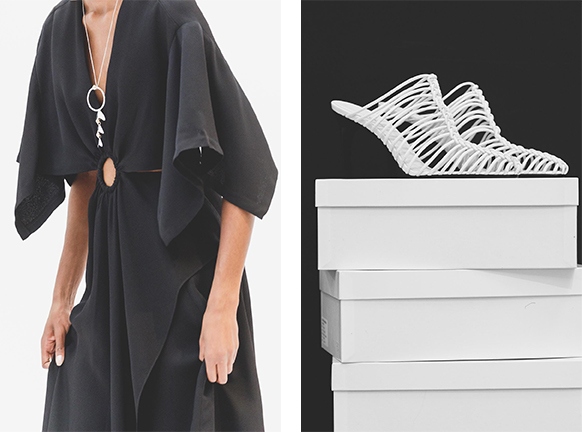
Producing Clothes For Life, Not Just Collections
“We are trying to slowly think about the way we build collections. They’re not even collections anymore. They’re actually more about capsules for living. It’s more about addressing what is necessary, what is desirable for right now. What is not tone-deaf?”
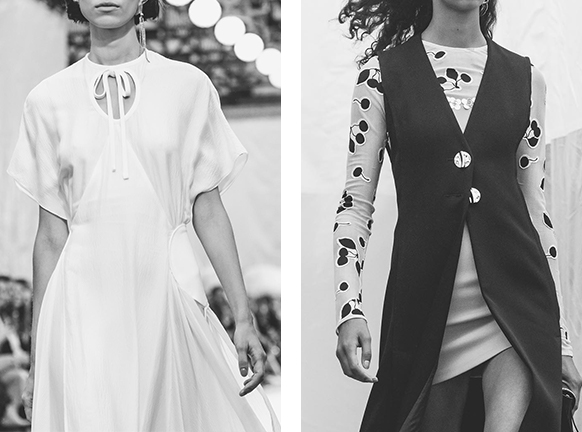
Phillip Lim’s Future Is All About Less Is More
“We’re just building on the wardrobe messaging and reinforcing the idea, ‘Pull out the old to combine with these new pieces’, instead of, ‘Replace, replace, replace!’ Even in the way we start post-COVID19, it is going to be even smaller, tighter, and more refined and focused. If we cannot identify who the piece is for, and we don’t have the hard population on it, then it probably is not ready to go out into the world. By default, if you start that way, you end up having less to have to deal with.”
Sustainable Materials Are The Latest In Innovation
“You know what’s actually the ultimate cutting edge in sustainability? Going back to natural fibers. Following nature’s process of naturally grown, using the sun to process, and letting it naturally decompose. To me, revolutionary doesn’t mean the latest and the greatest. Sometimes, revolutionary is being able to disrupt yourself and get back to the origins. That’s my mission.”
Also, Using Our Parents’ Approach To Fashion As A Guidepost
“I think that my point of view is, ‘How do we re-start this?’ Everyone’s talking about sustainability as a theory, as this big overarching thing. We forget that actually if we just look at our parents and we go back a little bit further, they had only a handful of options. It wasn’t ‘Consume, consume, consume.’ It was, ‘Educate, knowledge, patience, wait, appreciate, and enjoy.’ I want that again. I want to think about clothes and accessories and shoes in that way. I want to look at it and be tickled by it.”
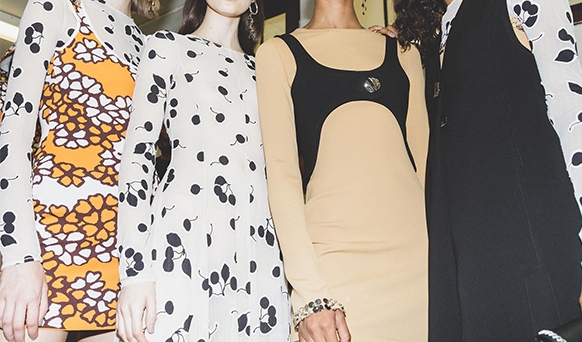
…Besides, Phillip Grew Up On Vintage
“I literally grew up in vintage and charity shops. Being a first-generation, we didn’t have any money. My mom worked in a sewing factory so I would see her work and labor over putting clothes together for pennies, basically. I was one of those school kids who, every season, got back-to-school clothes. But for me, my mom could only afford so much. ‘Yeah, you can have new shoes and maybe a pair of jeans, and maybe just a jacket. You make it work.’ I grew up in the beginnings of MTV where you had music videos. It was all these amazing musicians who were self-styled and a lot of the trend was thrift stores, so I grew up getting all my clothes through vintage.”
How Sustainability And Upcycling Impact His Own Wardrobe
“I’m finding that I’m rediscovering, reconnecting to pieces I have in the back of the closet. I’m just like, ‘This is great, I’m going to wear this now.’ If I love it or I can’t fit it anymore, then I’ll pass it to friends or family. Instead of just putting it in a bag and tossing it. I’ll pick and choose, or I’ll contact people who I feel like, ‘Oh, this is your style’, or, ‘You would like this,’ and it becomes a gift”.
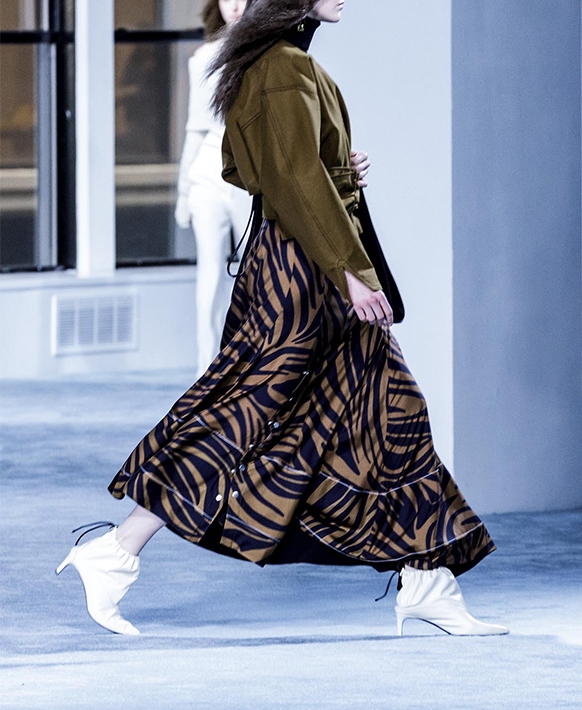
The Archive Sale Recirculates All The Greatest Hits
“We created this archive sale–it’s all these past season goodies that are really amazing still. But the market was too fast and people didn’t get eyes on it. It’s just season after season after season, and so luckily we were sitting on this inventory of brand new past-season clothes that were just really beautiful and there’s nothing wrong with it. Now that people have time, we were able to bring it back through an archive sale– kind of a secret portal–and re-market it in a way and offer it at such an amazing price that people are so happy about. It is offered to them at such a remarkable deal, and at the same time, it re-circulates these things…”
Phillip’s Hope For Fashion’s Future
“I hope that there is such a shift by individuals and brands, taking it back into their own hands and not having to be driven by just profits alone. I hope that there is a real wave of enough is enough, and we re-evaluate the calendars, the markets. What is actually germane. I hope that we stop and literally allow ourselves to appreciate what we’ve built. I hope that we go back into a place where we think about producing value and sharing value, instead of just about superficial beauty. I think that with that kind of knowledge and that kind of way of living, it automatically influences the actions you take, and how you carry and conduct yourself, and what is okay, and what is not okay. I hope we listen to our gut. I hope we collectively learn from the situation that we’re in, that this is happening for us, not to us.”


